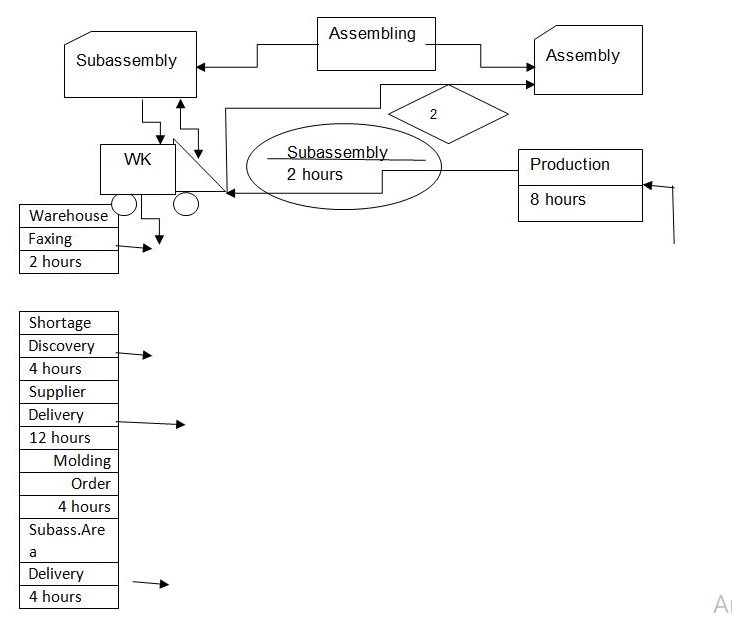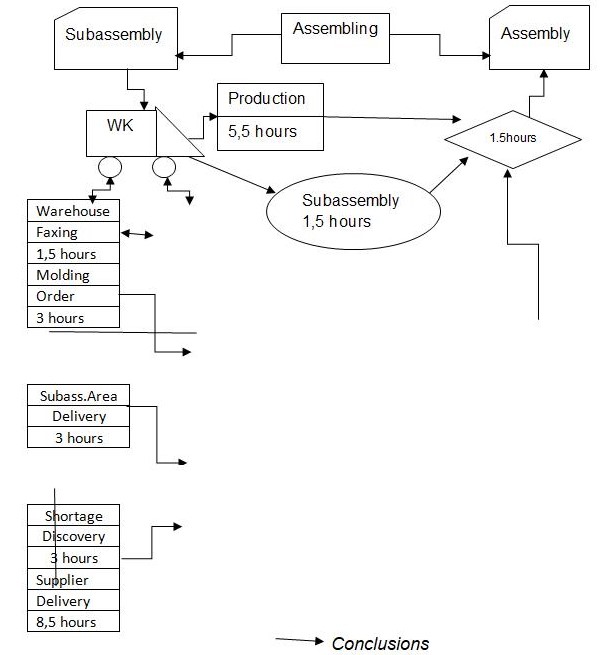Introduction
Performance of every business organization is based on the proper and balanced relation between the various spheres of its activity. In other words, every single department of the organization should fulfill its functions and put them in accordance with the performance figures and needs of the other departments to provide the successful work of the organization as a whole (Blanchard, 2003). Naturally, if an issue is observed in an organization, it is necessary to consider the performance of every single department to see which one experiences this issue and how it can be solved. This is namely what the Theory of Constraints deals with (Eliyahu, 1990).
Formulated by Eliyahu Goldratt, this theory uses the methods close to the medical ones in finding out the issue and approaching its solution: “The process a clinician applies to treating a patient is an excellent analogy for explaining how TOC recommends going about solving a systems problem” (AGI, 2008, p. 4).
Drawing from this, the Theory of Constraints tries to separate the issue in its elements, then find a solution to every problematic element, and finally propose the comprehensive solution for the whole issue. Accordingly, to create the value stream map and recommend certain solutions for the issues observed in the VMC, it is necessary to consider those issues and see their causes.
Current Situation
The very situation at the VMC is rather problematic because the CEO of the company Frank Richard realizes the necessity of updating the assembly processes implied seeing that the bulk of the company’s competitors have outsourced these processes to either foreign countries or other enterprises. The situation that makes Frank Richard think of the necessary updates is constituted by the time wastes during the subassembly processes, spare parts and molded parts delivery, the improper facilities location and space distribution at the plant territory, etc (Blanchard, 2003). The following value stream map, a tool used for understanding of the whole production process of the organization and the issues in it (GSN, 2009), can best illustrate the current state of things in VMC (Fig. 1).

Thus, the value stream map above demonstrates the fact that the very subassembly procedures take 24 hours for completion. These procedures include delivery of the spare parts to the subassembly area, discovering the shortage of parts and settling the issue of delivery the lacking details by the suppliers, ordering and receiving the molded spare parts from the molding department, their processing, and delivery to the subassembly processing area.
Moreover, the ordering and receiving the spare parts from the warehouse, their processing in the subassembly processing area, delivery to the subassembly facility and the final delivery to the major assembly facility take 14 more hours. Such a time consuming sub assembly process involves huge expenses on labor force salaries, equipment maintenance and updating, and complicates the issue of space use at the subassembly territory.
Realizing these issues, the CEO of VCM took up the lean production system for this company and set as the objectives for this program implementation to reduce direct labor costs by 25%, production cycle time by 30%, inventory costs for 40%, expediting and obsolescence costs by 75%, and to improve the overall space use in the VCM.
Improvement Suggestions
To reach the objectives outlined above, the VCM management needs a program of activities that would save time spent on subassembly operations and especially on delivery of the spare parts from warehouses and molding department, and on the settlement of the issues with lacking details in the middle of the subassembly processing. The steps taken for achieving this goal should include both the purely technical solutions concerning the equipment updating and the management questions like space use, delivery process restructuring, etc.
Moreover, VCM should pay attention to the experience of domestic and foreign companies that have already faced and fought the issues of time and funds saving. In more detail, the steps needed by the VCM include:
- To implement the mass production practice in the VCM plant;
This step is widely used in the Japanese automotive industry, whose leader Toyota is known for the invention of the very technique of value stream mapping. Mass production allows the company to implement computerized technology, involve less labor costs, and moreover to reduce the prices for the goods produced. The implementation of the mass production will allow VCM to achieve two objectives, i. e. reduce labor costs by 25% and reduce costs for expediting and obsolescence by 75% (Eliyahu, 1990).
- To relocate the production and processing, assembly and subassembly facilities so that to save time spent on delivery of spare parts from one facility to another;
The correct implementation of this step will potentially allow VCM to reach two objectives at once. First of all, the reduction of the production cycle time by 30% will be possible, and the improvement of the overall space use will be achieved when all the facilities will be located in the order of their participation in the subassembly process (Eliyahu, 1990).
Warehouses and the molding department should be located closer to the subassembly facilities to reduce delivery time. Stricter control should be established over the shortage of spare parts and their timely delivery (Blanchard, 2003). Moreover, the production cycle should be carried out only once between the details’ processing at the subassembly area and their delivery to the main assembly facilities (Blanchard, 2003). Thus, mass production, relocation of the facilities, and control over shortage settlement will allow VCM to achieve its objectives.
The following value stream map (GSN, 2009) of the future development of the VCM subassembly processes demonstrates the improvements in all the above mentioned areas and the time spent on the subassembly operations after the recommended improvements are made (Fig. 2).

Conclusions
To conclude, the situation observed in the VCM is a rather problematic one. Its solution demands the use of the Theory of Constraints and the practical steps that include mass production implementation, relocation of warehouses, molding department, and the processing facilities to save time and funding, and the establishment of stricter control over the timely delivery of the lacking spare parts.
References
- AGI. (2008). The Theory of Constraints and its Thinking Processes.
- Blanchard, B. S. (2003). Logistics, Engineering, and Management. Prentice Hall; 6 edition.
- Eliyahu, G. (1990). What Is This thing Called Theory of Constraints And How Should It Be Implemented? North River Press.
- GSN. (2009). Lean and Clean Value Stream Mapping.